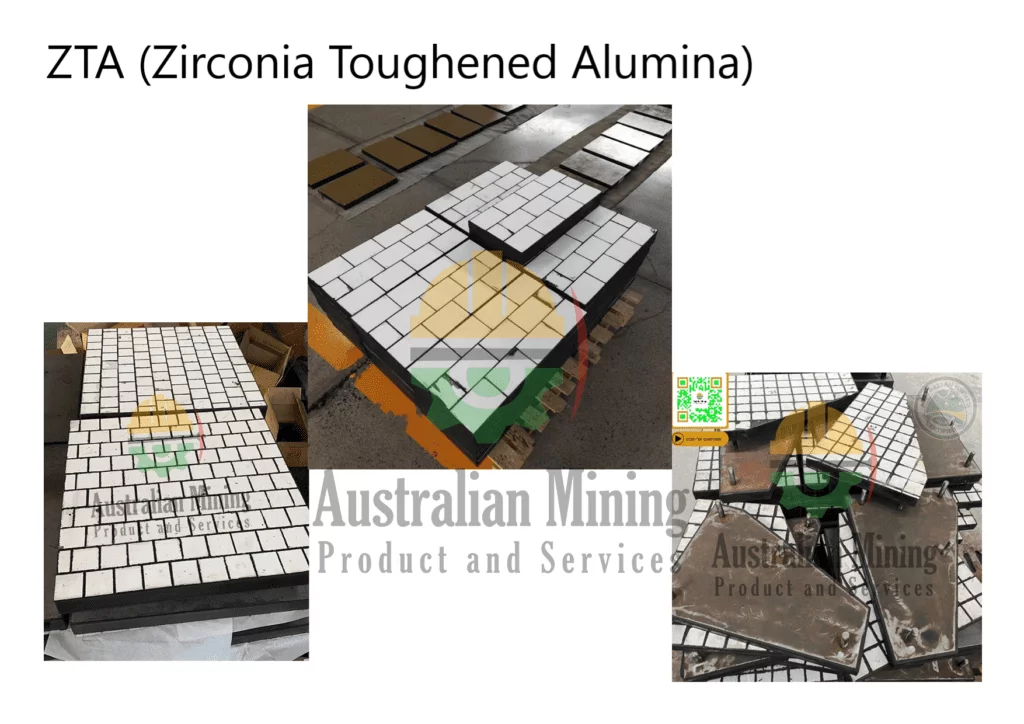Zirconia Toughened Alumina (ZTA) ceramics offer an exceptional performance-to-price ratio. Zirconia Toughened Alumina (ZTA) belongs to a family of ceramics that have a toughening mechanism due to the transformation of the crystal structure under an applied stress. Their microstructures have been tailored to produce a significant enhancement of structural properties over basic
alumina materials.
These improved properties are the result of a combination of factors, most significantly a phenomenon known as “transformation tougheningâ€. ZTA’s carefully tailored microstructure with a uniform dispersion of particles in an alumina matrix results in a more fracture-resistant structure than alumina alone.
ZTA’s are produced to contain 2 – 20 volume percent of fine zirconia (ZrO2) particles in an alumina (Al2O3) matrix. When placed under stress, these zirconia particles change their crystal structure from a tetragonal
to a monoclinic structure. This transformation results in a 3 – 5 volume percent expansion, which compresses the surrounding crack in the alumina matrix. This captures or “pins†the crack and restricts its rate of propagation.
The result is a stronger and tougher material than regular alumina.
Zirconia-Toughened Alumina (ZTA) belongs to a family of ceramics that have a self-sealing mechanism at work within them; their microstructures have been adjusted to produce an effect known as transformation toughening.
ZTA is produced to contain 10-20 vol% of fine zirconia (ZrO2) particles in an alumina (Al2O3) matrix. When placed under stress, these zirconia particles change their crystal structure from a tetragonal to a monoclinic pattern – a transformation that results in a 3-5 vol% expansion, which compresses the surrounding alumina, making it more resistant to cracks.
Unusually, even the stress field around a crack is enough to induce this transformation, so whenever a crack tries to advance in ZTA, the zirconia crystals expand, compressing the alumina matrix and squeezing the crack shut. Higher strengths are also favored in ZTA because the addition of zirconia particles encourages a smaller Al2O3 grain size.
ZTA ( Zirconia toughened alumina) and alumina (Al2O3) are relatively inert but monolithic zirconia can be vulnerable to absorption of some chemicals in the presence of water molecules. ZTA ( Zirconia toughened alumina) composites fare much better under hydrothermal conditions.
ZTA ceramics are used widely in applications where strength, toughness, chemical inertness and wear resistance are required. The relatively lower weight-to-volume ratios than typical zirconias and exotic metallic
materials can also be advantageous.

